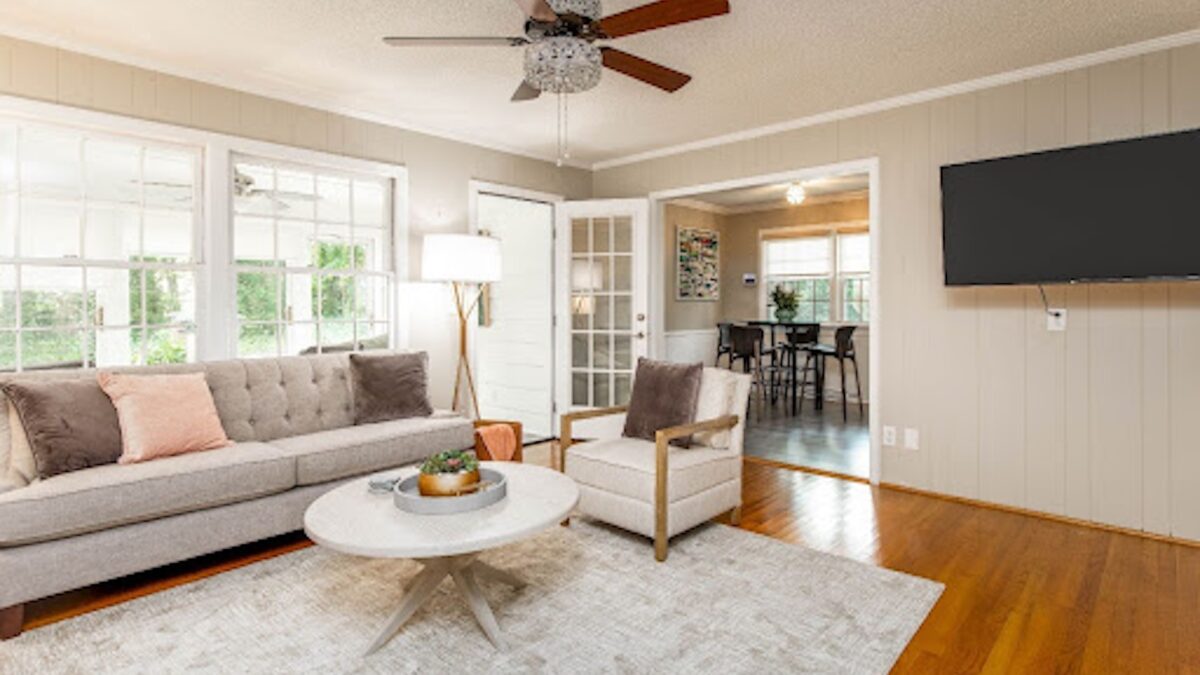Moving day is quickly approaching, which means it’s time to declutter your place! The trouble is, you have a collection of furniture that you don’t want to take with you. Moving across the country and can’t fathom the idea of transporting furniture you don’t necessarily love to your new space? Do you have hand-me-downs that no longer serve your sense of style? Or perhaps your furniture simply won’t fit the space in your next apartment.
Whatever your reason for relocating, it sounds like it’s time to embrace the old adage: out with the old and in with the new. While the best time to get rid of unwanted furnishings is right before you move, it can be hard to figure out what to do with old furniture. What exactly is the procedure for getting rid of large furniture? You have a few options.
Sell it online.
If you have a few months before the big move, consider selling furniture that is still in good condition. Make sure to take clear, well-lit photos of your furniture and post them on multiple online marketplaces. Popular sites include Facebook Marketplace and Craigslist.
In your listing, share photos and descriptions of any wear and tear the buyer can expect to see upon pick up. This kind of transparency ensures a faster sale because buyers know what to expect when they see your furniture in person. Finally, make sure to price your item fairly. Quickly research comparable items and price accordingly. If you price your furniture too high, you may not have many — if any — offers. Do you own high-end furniture? If so, you may want to consider selling it through a consignment shop.
If you’re tight on time, you may not have ample time to find a buyer before your move. Consider other tactics to find a good home for your furniture.
Give your furniture to someone in need.
One of the best ways to reduce landfill waste is to rehome your gently-used furniture. Start by offering your large home goods and furnishing to friends, family, and neighbors who might need them! If the items go unclaimed, post photos of your furniture sets on social media networks or share via word-of-mouth at work, church, family functions, or friendly get-togethers. You may be surprised by the interest you receive from your extended network.
Donate it to a charitable organization.
If no one in your personal network needs furniture, a local charity may be interested in taking in your items. Some local charities, like the Salvation Army, Goodwill, and local thrift stores, will collect gently worn furniture and resell it to the community at a discounted price. Other charitable organizations, like churches, will find a person or family in their network in need of your items.
However, before you donate, make sure to research giving guidelines online or by calling. Each organization will have rules about what kind of furniture is acceptable and unacceptable. In general, furniture must be in good condition. This means that furniture should be structurally sound, and upholstery shouldn’t be torn or stained. Often, your furniture must be pre-assembled — charities may not take particle board furniture that has been taken apart. Do your research before you drop off furniture — you may find organizations that will pick your old furnishings up from your home.
Gently dispose of furniture that’s in poor condition.
If your furniture is falling apart, it may be ready for retirement. While most neighborhoods have curbside pickup days for unwanted furniture, those pieces tend to end up in landfills. In order to responsibly throw away furniture, locate a reuse or recycling center nearby using Earth911’s search tool. When you recycle damaged, worn furniture, the raw materials can be up-cycled by certain businesses.
Make smart choices about your future furniture.
Now that you have a plan to pare down your belongings, it’s time to think about how you’ll furnish your new place. Before you jump into purchasing furniture: how long will I live in my next home? The answer to that question can help you decide if you’ll be at your new home long enough to merit furniture ownership, or if you’re better off opting for a furniture solution for short-term leases.
Invest in furniture for a long-term move.
If the answer to that question is “long-term,” it may make sense to invest in quality furniture you love. If your budget allows you to purchase new furniture, make sure to find well-made furniture that is structurally sound.
Avoid buying fast furniture that’s cheaply made, as these pieces tend to end up in landfills. In fact, according to Reuters, Americans generate 9.8 million tons of furniture waste per year. Help reduce landfill waste by investing in furniture you plan on keeping for a long period of time. If you have a strict budget, explore purchasing affordable, high-quality used furniture.
Avoid purchasing furniture for a short-term move.
However, if you’re unsure how long you’ll be living in your next place or you only plan on living there for a short period of time, renting furniture may be a better option for you. CORT provides a convenient furniture subscription that allows you to rent the furniture you need, for as long as you need it. The day you move in, the furniture is already set up! And when it comes time to move out, CORT does all the heavy lifting. Avoid the pain of having to get rid of unwanted furniture again!
Interested in exploring home furniture rental? Check out a CORT Furniture Rental packages online and opt in to an easier move.





